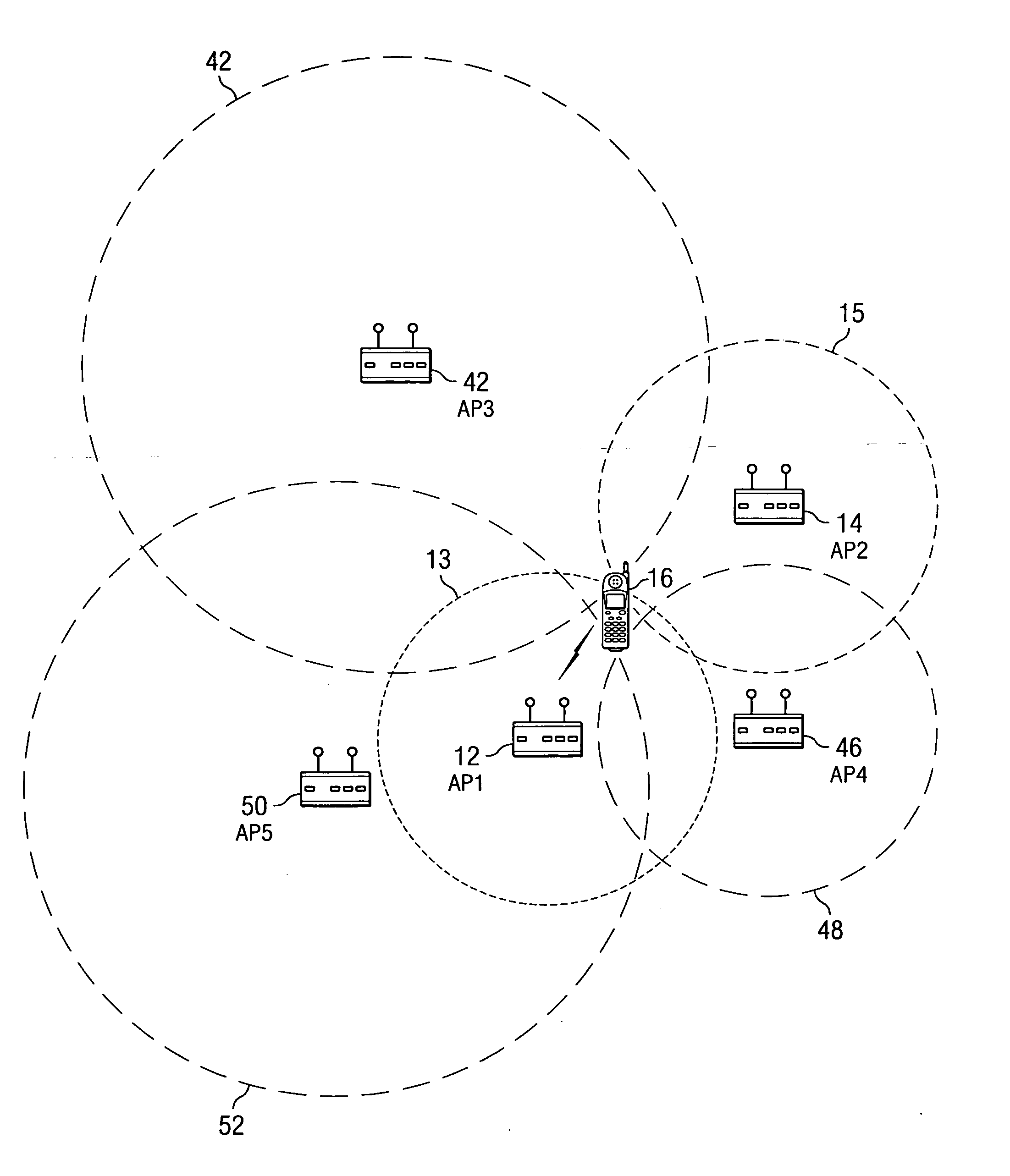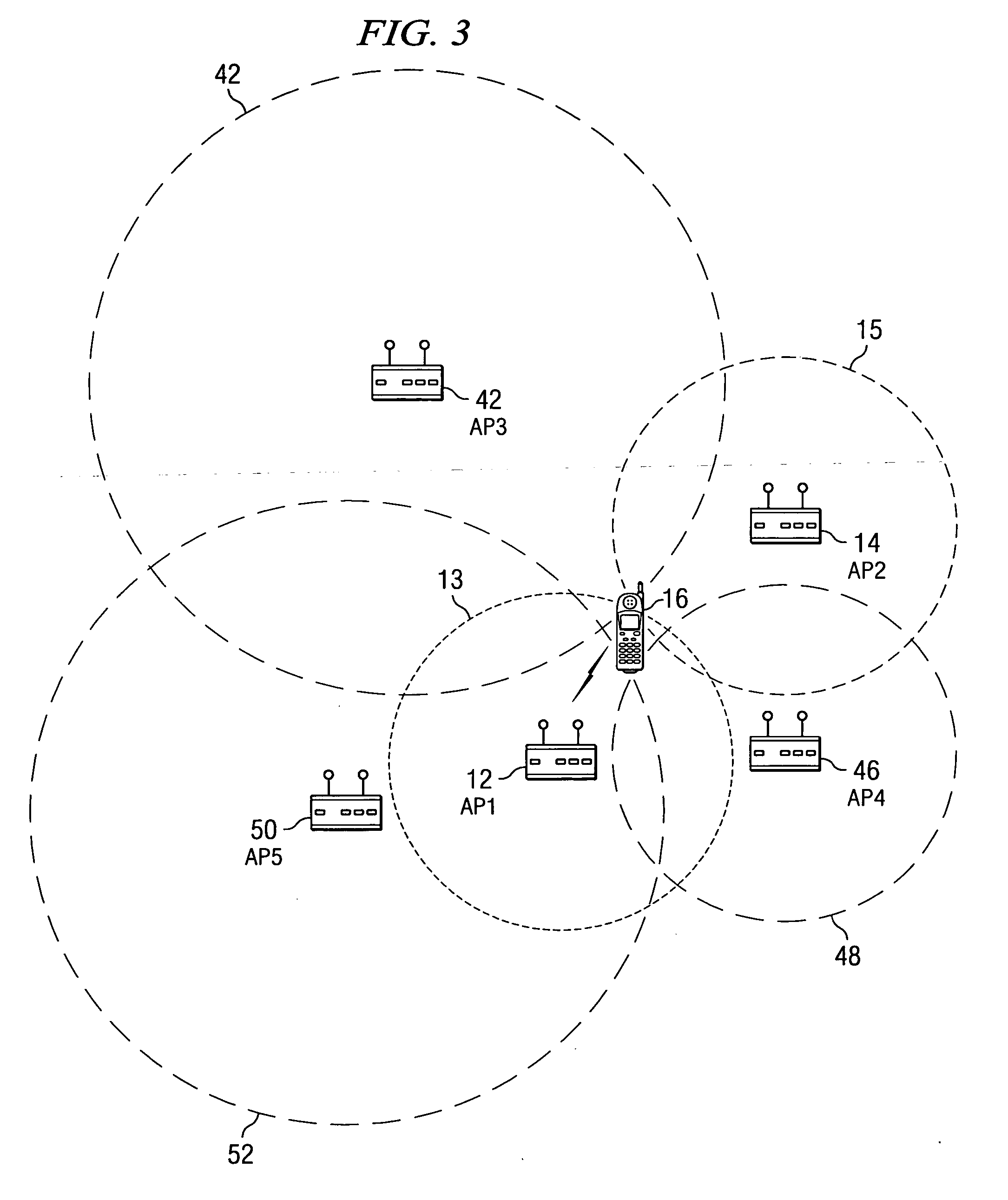Minimizing handoffs and handoff times in wireless local area networks
- Summary
- Abstract
- Description
- Claims
- Application Information
AI Technical Summary
Benefits of technology
Problems solved by technology
Method used
Image
Examples
Embodiment Construction
[0021] The preferred embodiment of the present invention includes a technique for reducing the handoff times to prevent delay in packet transmissions on a wireless local area network (WLAN) and reducing the number of handoffs wire a wireless endpoint station (STA) between access points (APs). One implementation of the preferred embodiment is on an IEEE (Institute of Electronic and Electrical Engineers) 802.11 WLAN. An 802.11b WLAN network is a highly dynamic environment because of the inherent dynamics of the wireless medium, low operating power of 802.11, and operation in the 2.4 GHz range. Since the 802.11b operates at low power (to save power and increase battery lifetimes), a geographically smaller BSS with multiple APs (Access Points) leads to frequent handoffs and roaming scenarios. Further, since 802.11b networks operate in the unlicenced frequency range of 2.4 GHz, it is potentially open to interference from other devices (e.g., microwaves, cordless phones, Bluetooth WLANs)....
PUM
 Login to View More
Login to View More Abstract
Description
Claims
Application Information
 Login to View More
Login to View More - R&D
- Intellectual Property
- Life Sciences
- Materials
- Tech Scout
- Unparalleled Data Quality
- Higher Quality Content
- 60% Fewer Hallucinations
Browse by: Latest US Patents, China's latest patents, Technical Efficacy Thesaurus, Application Domain, Technology Topic, Popular Technical Reports.
© 2025 PatSnap. All rights reserved.Legal|Privacy policy|Modern Slavery Act Transparency Statement|Sitemap|About US| Contact US: help@patsnap.com



